St Patrick’s Day
Tomorrow is St Patrick’s Day and this year, like last year, it will be a very different event in Ireland. There will be no marches and bands, no get-togethers and parties. People are encouraged to stay home. Celebrating only online.
The man to whom this day is dedicated and who is known as Saint Patrick, is also the primary patron saint of Ireland. He was born in Britain around 386 AD and came to Ireland as a slave after he was captured by pirates at the age of 16.
During his enslavement he developed a deep faith in God. He escaped his captors after six years and came back to Ireland as a missionary some years later. Here he served as a bishop although not a great deal is known about the places where he worked. It is believed the supposed day when he died is the 17th March 461, the day when the Irish celebrate St Patrick’s Day.
St Patrick’s Day is also celebrated around the world with buildings going green and in non-Covid years marches and bands all over the world usually celebrate this Irish day.
In Ireland a few places are also associated with Saint Patrick. Many of these the Irish have inherited as part of a broader narrative of Saint Patrick, originating from later traditions and circumstances. This includes Croagh Patrick, the mountain in the west of Ireland which overlooks Clew Bay in County Mayo. The mountain is renowned for its Patrician Pilgrimage in honour of Saint Patrick’s fast on the summit for forty days during Lent in 441 AD.
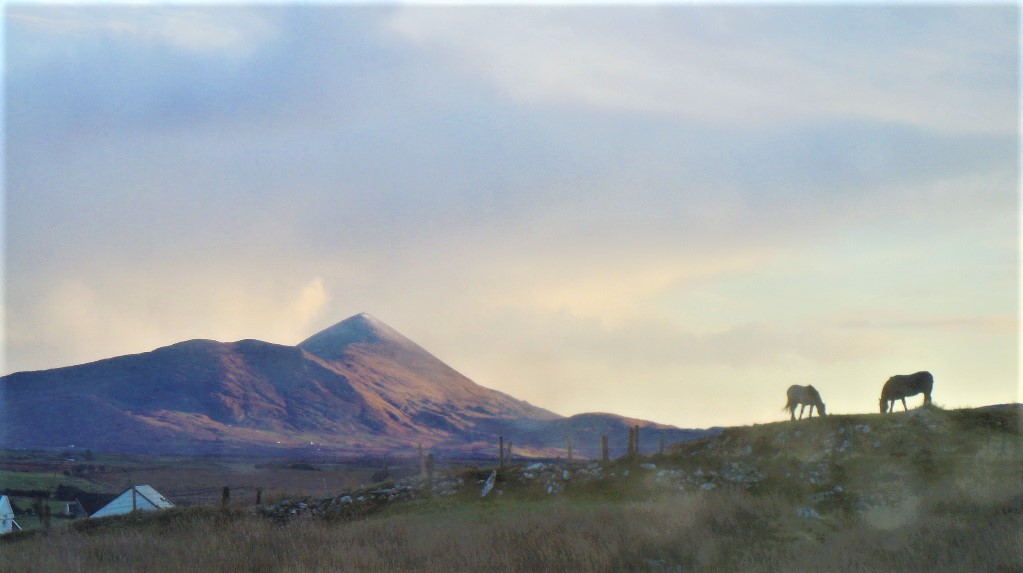
Croagh Patrick (locally known as the Reek)
This mountain, which rises to a height of 765 metre, draws thousands of pilgrims each year who make the trek to the top. This annual day of pilgrimage in Ireland happens on the last Sunday in July, also called Reek Sunday. It is estimated that during normal years around one million people climb this mountain every year.
We as a family climbed the mountain during our stay in County Mayo over the Christmas holidays some years ago.
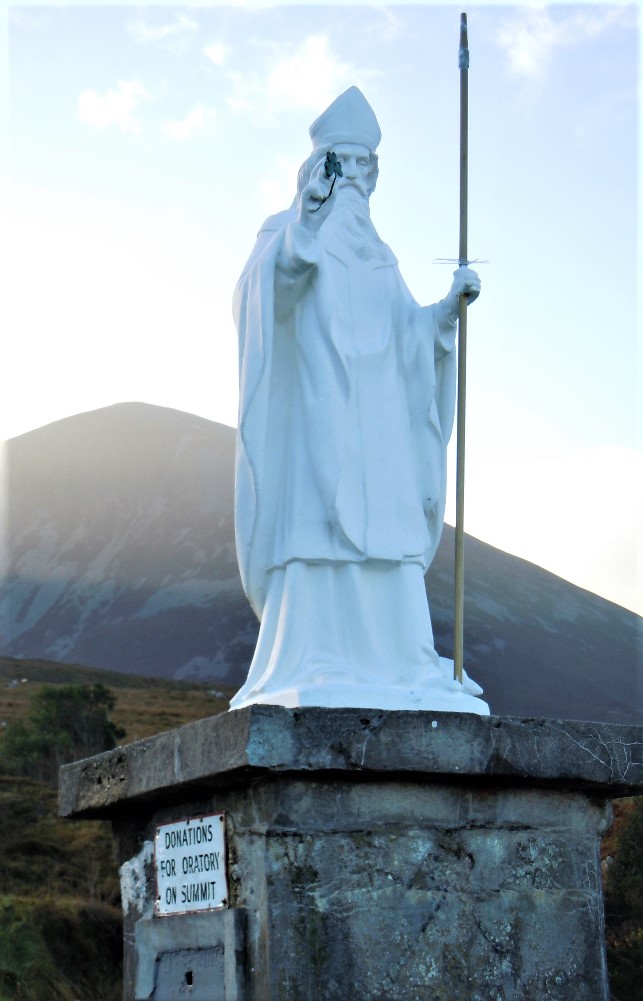
The first part of the climb, a little bit further than the statue, is really tough going. Once you reach the top of the smaller mountain, so to speak, where you move to the other side of the mountain the walking gets easier until you reach the stones.
From there the climb is steep and very slippery towards the very top with loose rocks and stones. But the final stage to the summit is one of elation.
It used to be that pilgrims would climb the Reek with bare feet, as an act of penance.
Traditionally the pilgrimage also took place at night but due to safety the last 30 years has seen the climb made during daylight hours. The lady at the restaurant at the foot of the mountain told us that only one or two pilgrims a year still climb it bare feet, “it is really a dying tradition,” were her words.
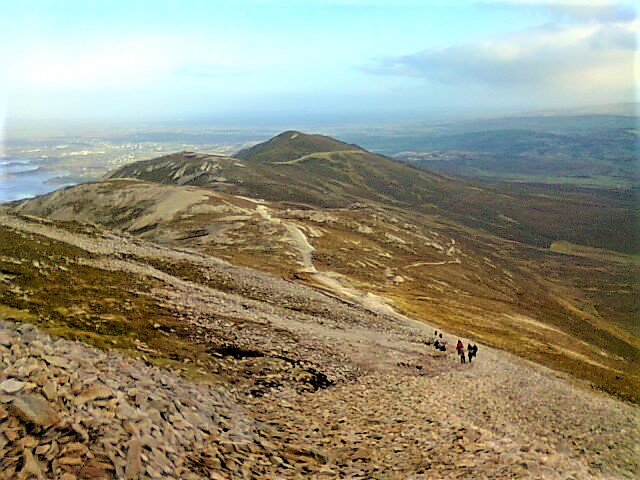
I was very impressed that there wasn’t too much in the way of touristic gadgets at the top of the mountain. Only the small chapel and the view….
Confessio
Saint Patrick wrote Confessio, a spiritual autobiography, telling about the greatness of God as he experienced it in his own life, starting with: “My name is Patrick. I am a sinner, a simple country person.” Confessio highlights his own growth in faith and trust in a personal and loving God as the inner source of his strength, especially in his many difficulties.
The Book of Armagh contains the earliest copy of Saint Patrick’s Confessio known to exist and is held by the Library in Trinity College, Dublin.
There are also a few legends surrounding the saint, including that he banished all snakes from Ireland…
“Lá fhéile Pádraig sona dhuit!” or “Happy Saint Patrick’s Day“!


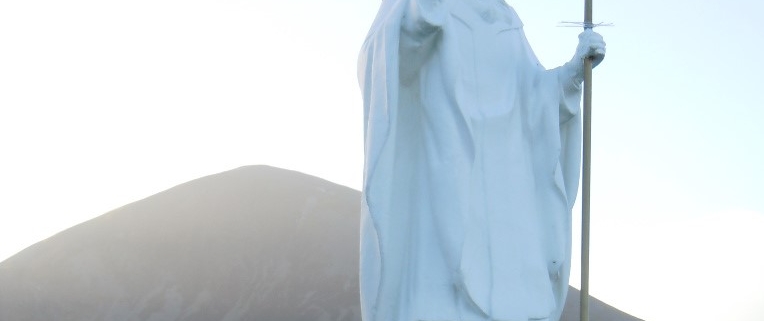
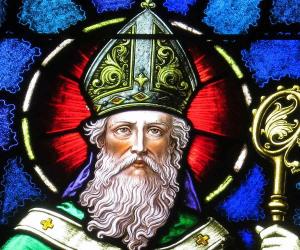
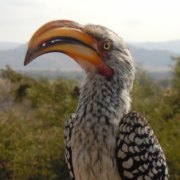
Leave a Reply
Want to join the discussion?Feel free to contribute!